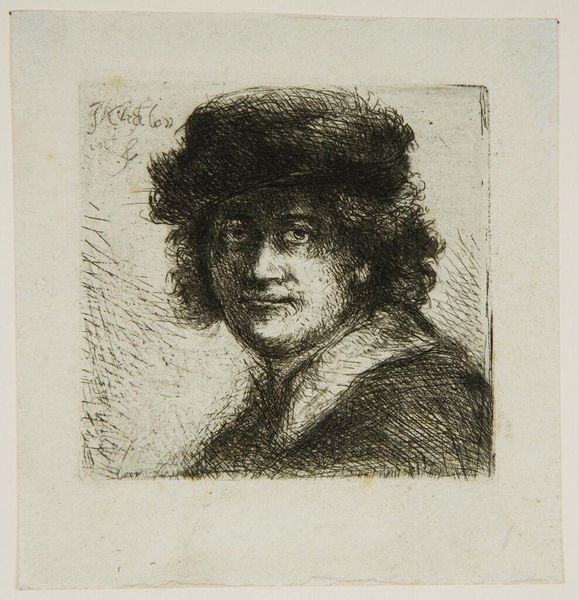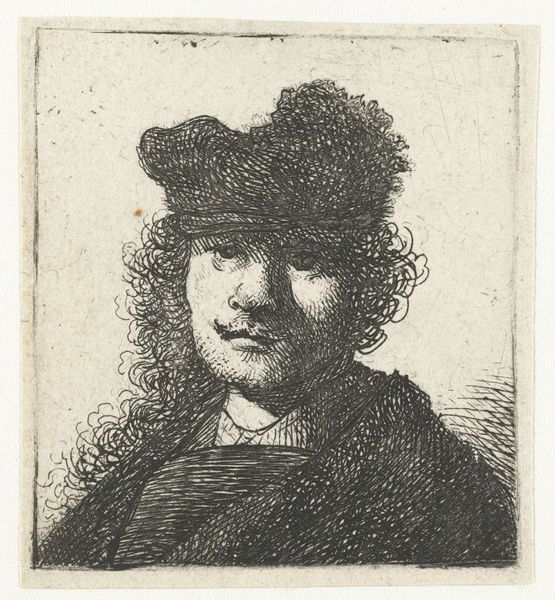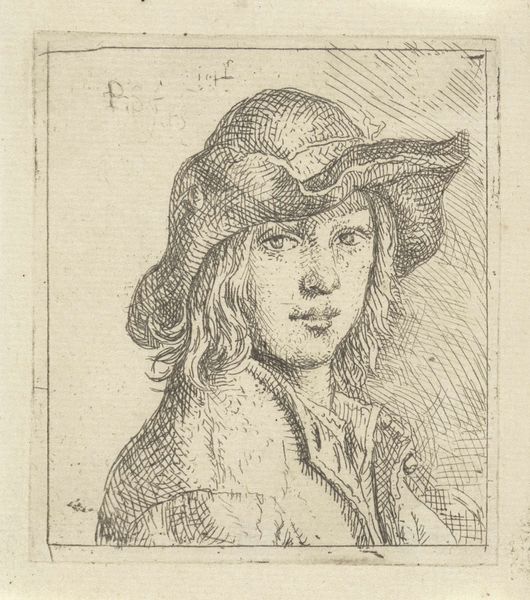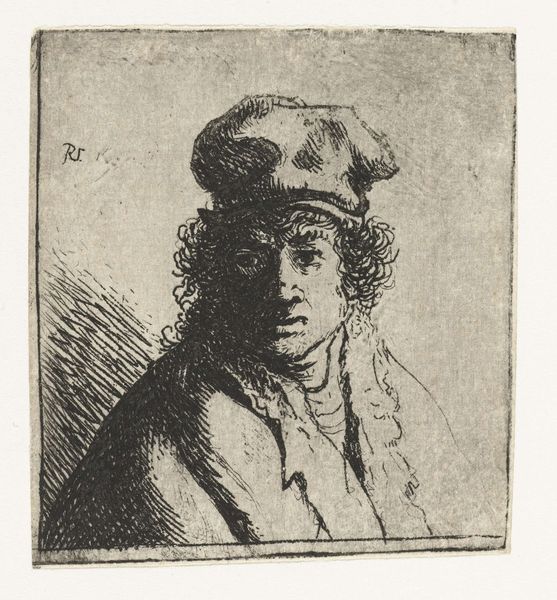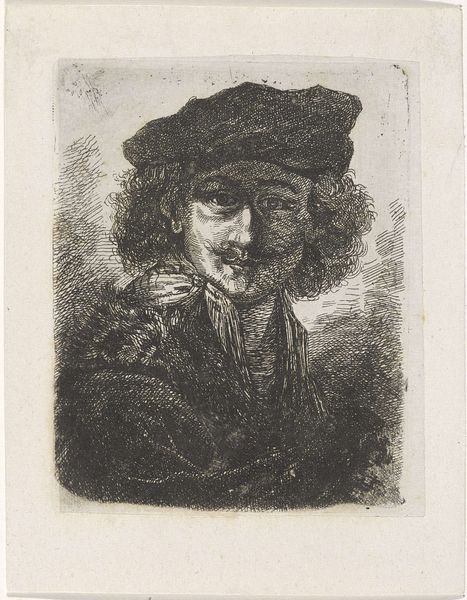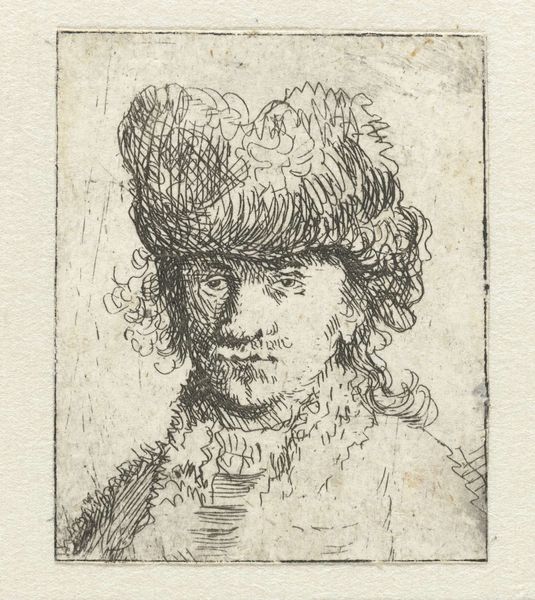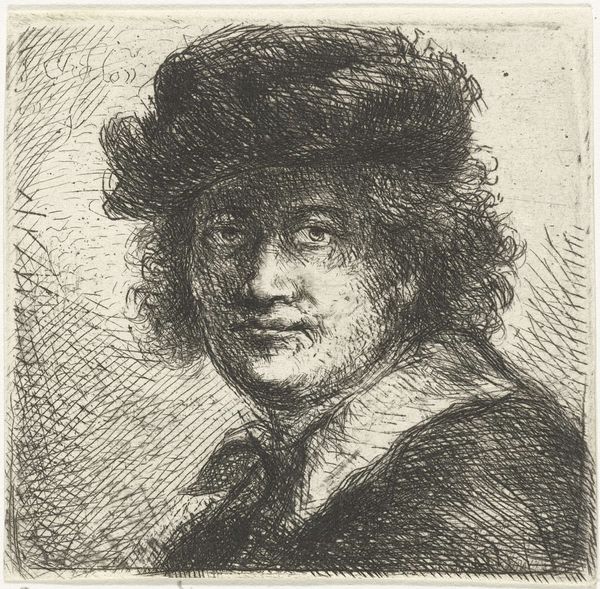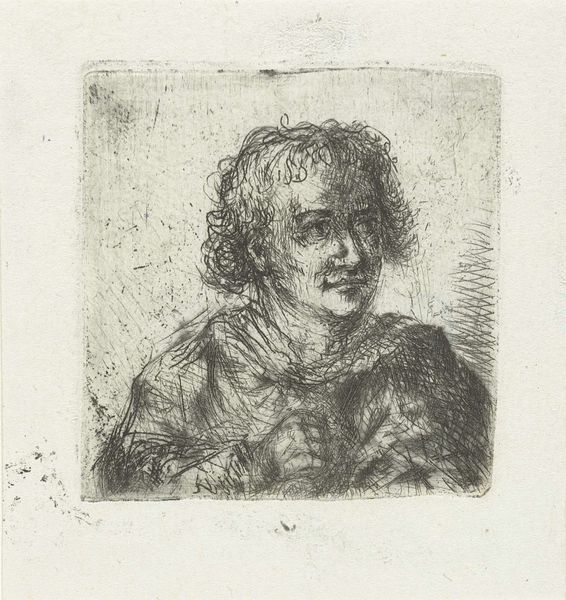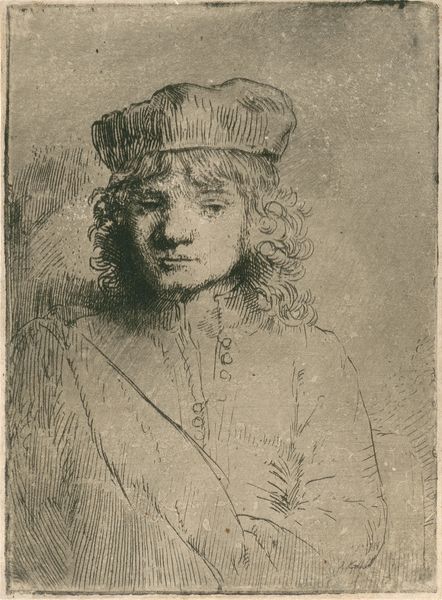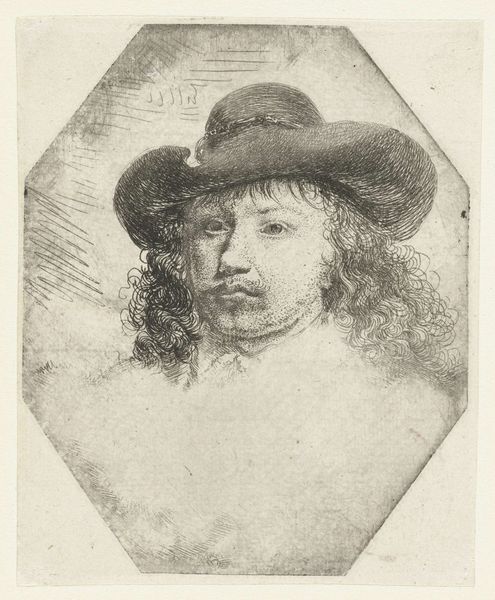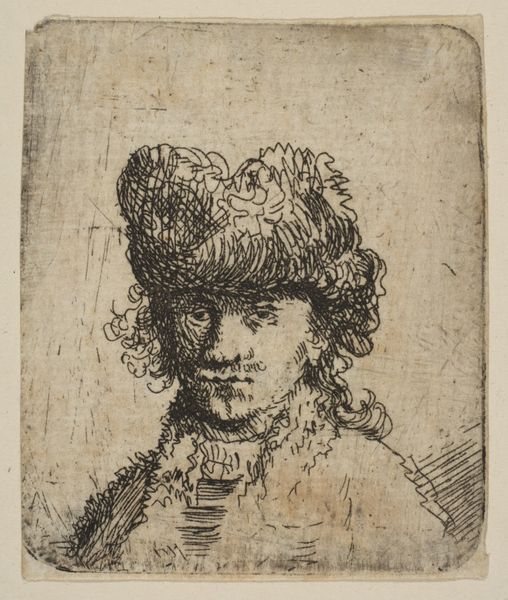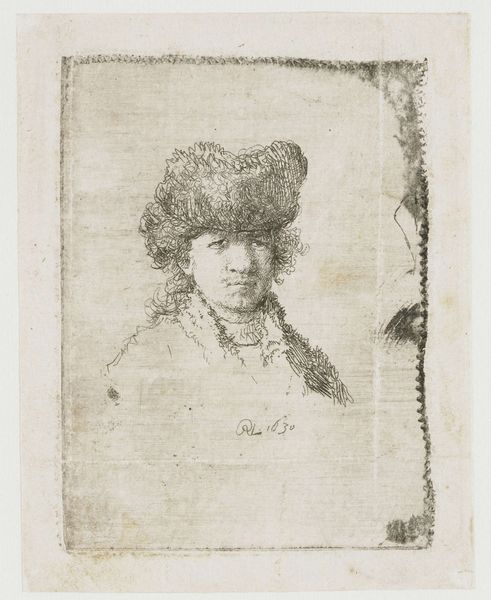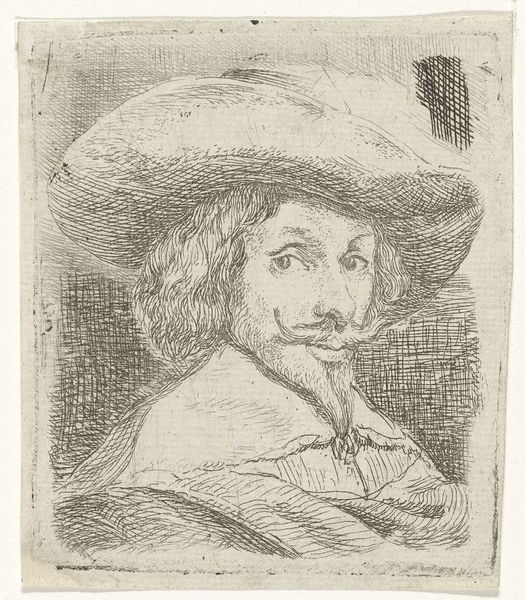
print, etching
#
portrait
#
baroque
# print
#
etching
#
old engraving style
#
genre-painting
#
history-painting
Dimensions: height 47 mm, width 47 mm
Copyright: Rijks Museum: Open Domain
Editor: This etching, tentatively titled "Vermeende portret van Jan Six", made sometime between 1630 and 1700, feels quite intimate, despite its age. It's anonymous, and the stark contrast created through the etching really highlights the subject's face. What strikes you when you look at this work? Curator: Well, immediately I'm drawn to the presumed identity – "Vermeende portret van Jan Six." That "Vermeende," meaning "alleged," is key. The uncertainty of the sitter highlights the evolving function of portraiture at that time and the complicated relationship between art, identity, and social standing. Who *was* Jan Six, and why would an anonymous artist create this image of him? Editor: So, the identity—or lack thereof—adds another layer of complexity. Jan Six was a wealthy art collector, right? Curator: Exactly. Six was a prominent figure in Amsterdam’s cultural elite. So, was this portrait commissioned, perhaps as a display of status, or created and circulated without his consent? The ambiguity surrounding its origin shifts the focus from a straightforward representation of a person to a commentary on fame and the public image, maybe even a veiled criticism of the wealthy elite of the time. What do you make of the baroque style in this context? Editor: It's interesting to consider the opulence typically associated with baroque being expressed through the medium of a print – which would have been more accessible than a painted portrait, right? Maybe that's why the identity of the sitter is not verified in any way. Curator: Precisely! Prints democratized images to some extent. That interplay between accessibility and the subject’s elevated status reveals a tension at the heart of the work itself. This brings up crucial questions: Who had access to it, what did they think about Six or their society? It's all very complex. Editor: I hadn't considered how the medium itself played a role in the message! Now, thinking about that wider social context makes the piece far more intriguing. Curator: Exactly, it is never only an artwork but also what it is meant to signify and accomplish.
Comments
No comments
Be the first to comment and join the conversation on the ultimate creative platform.
